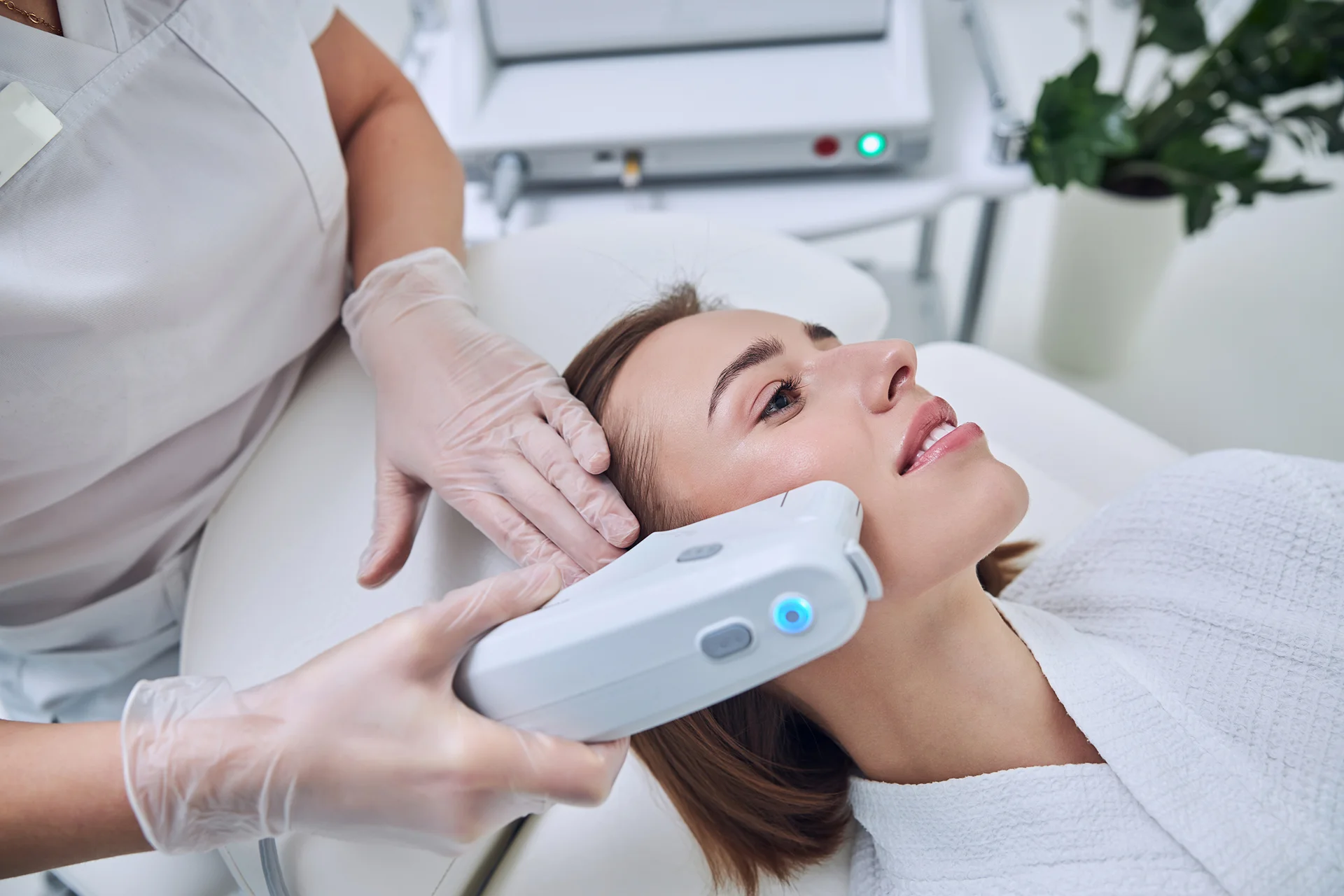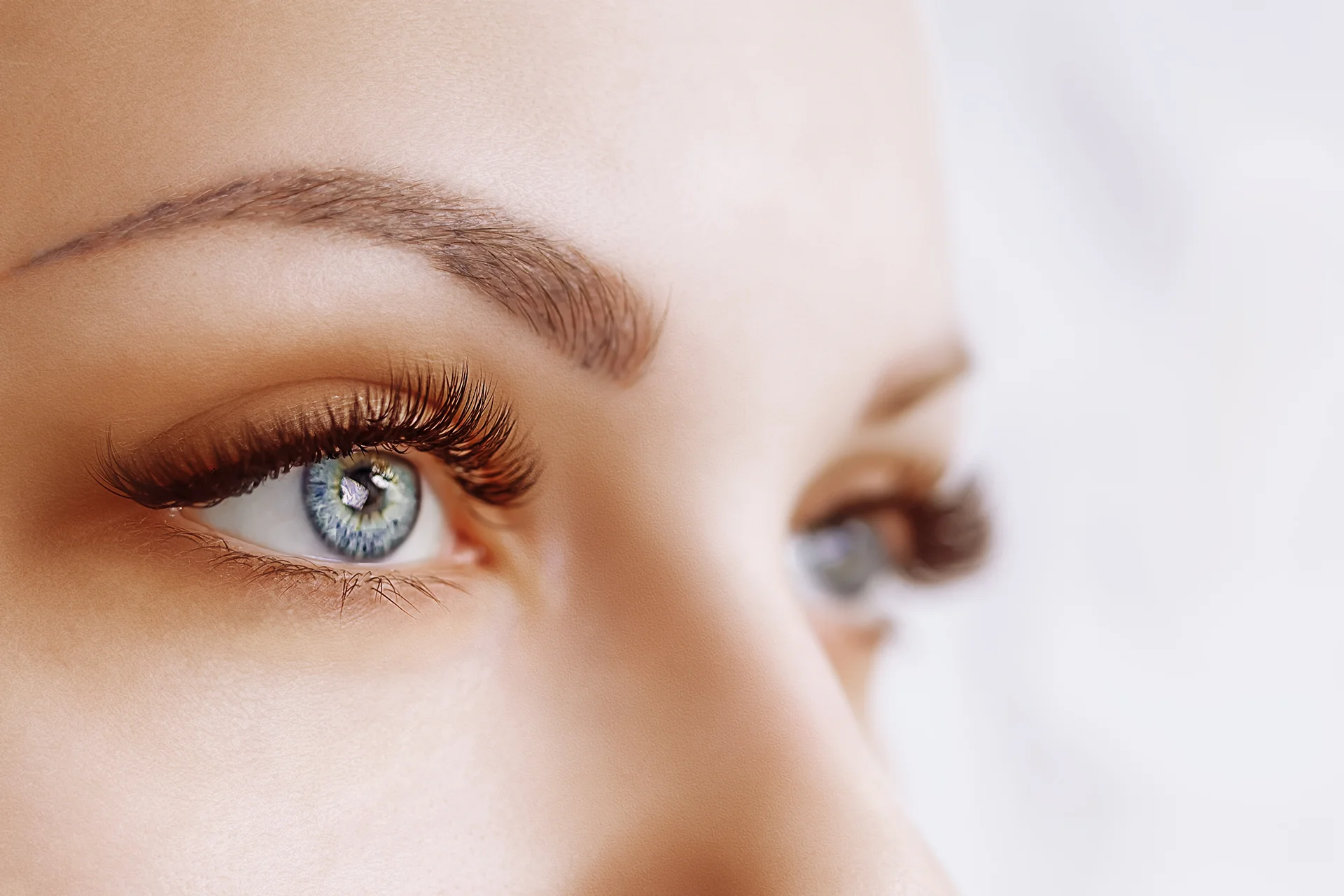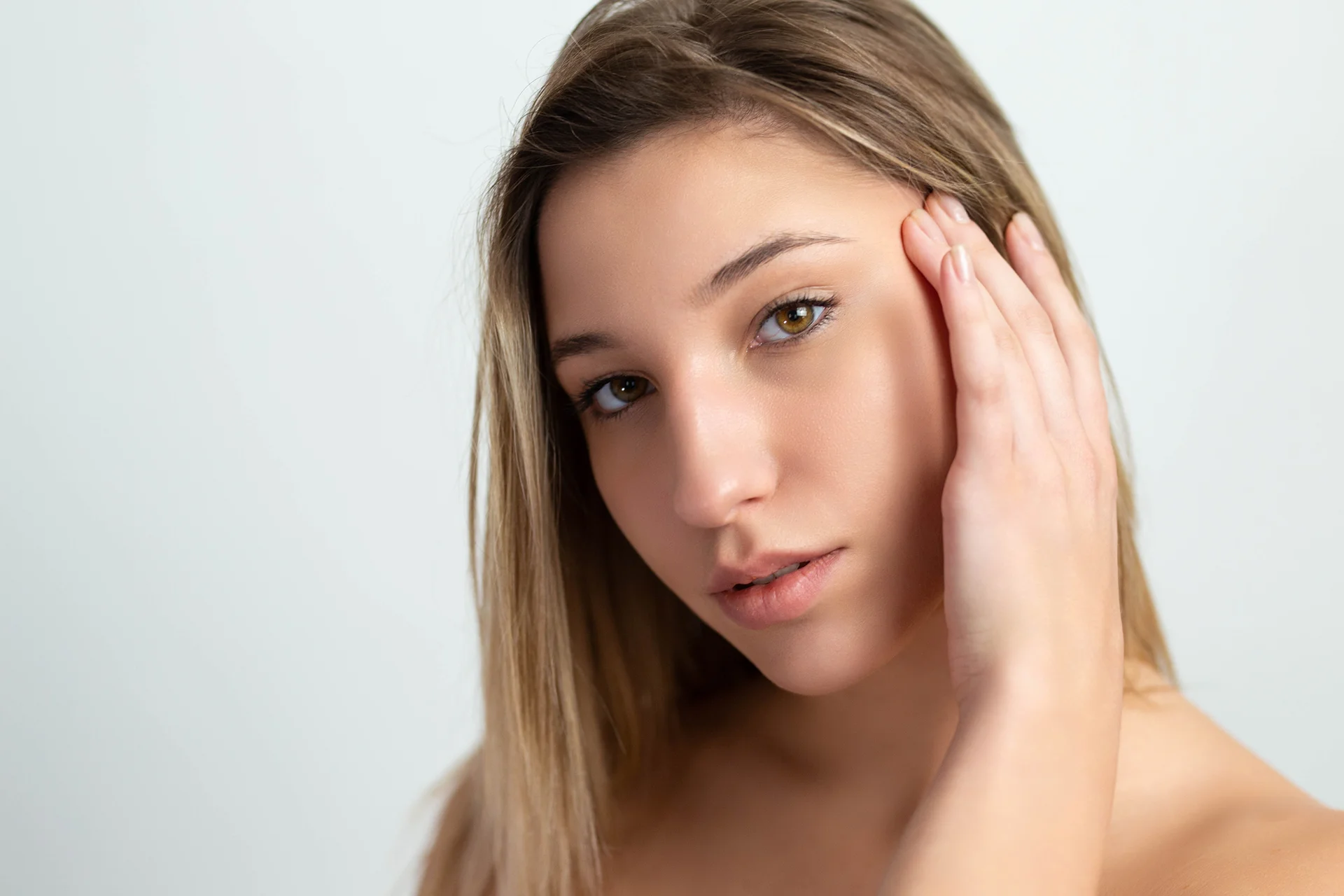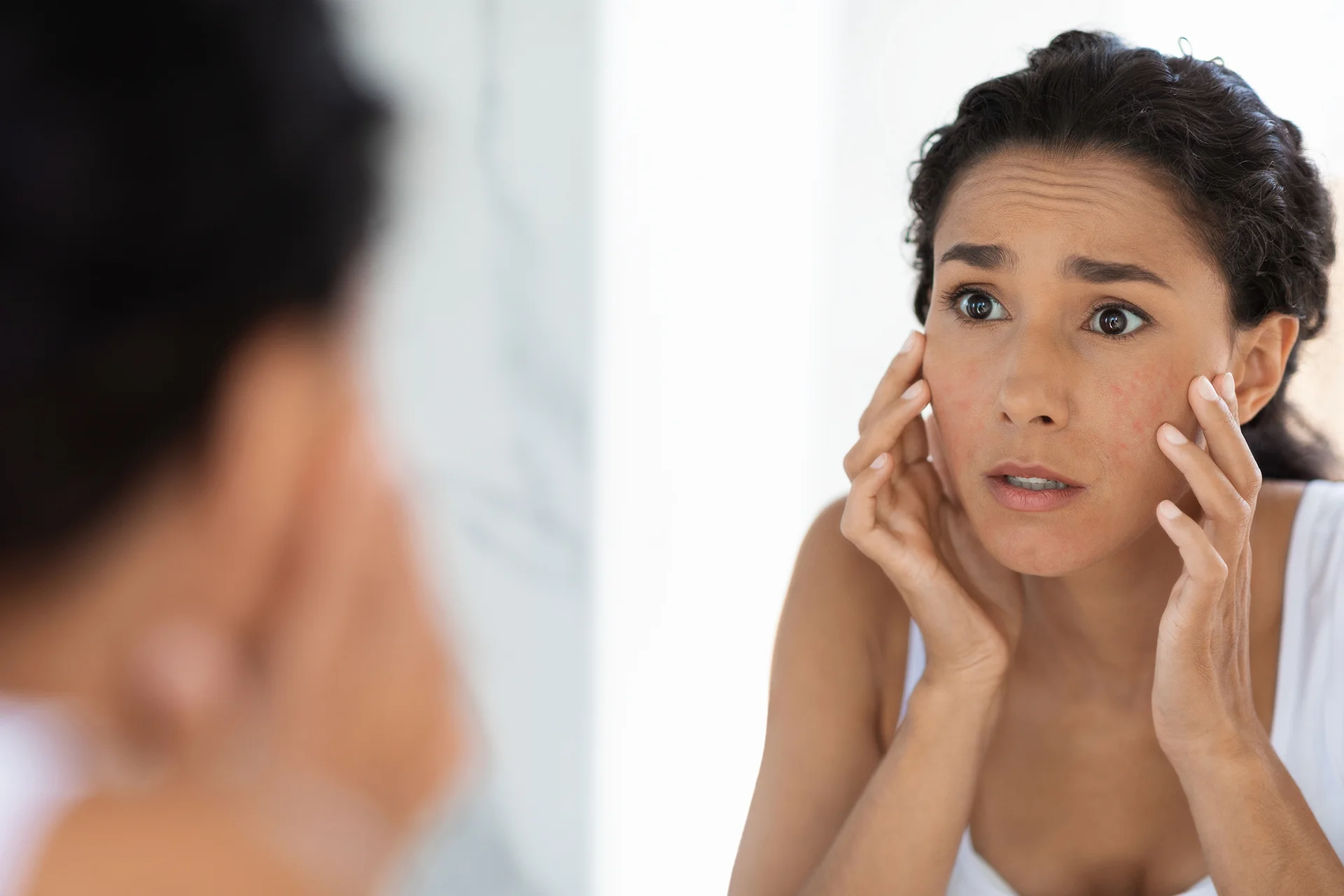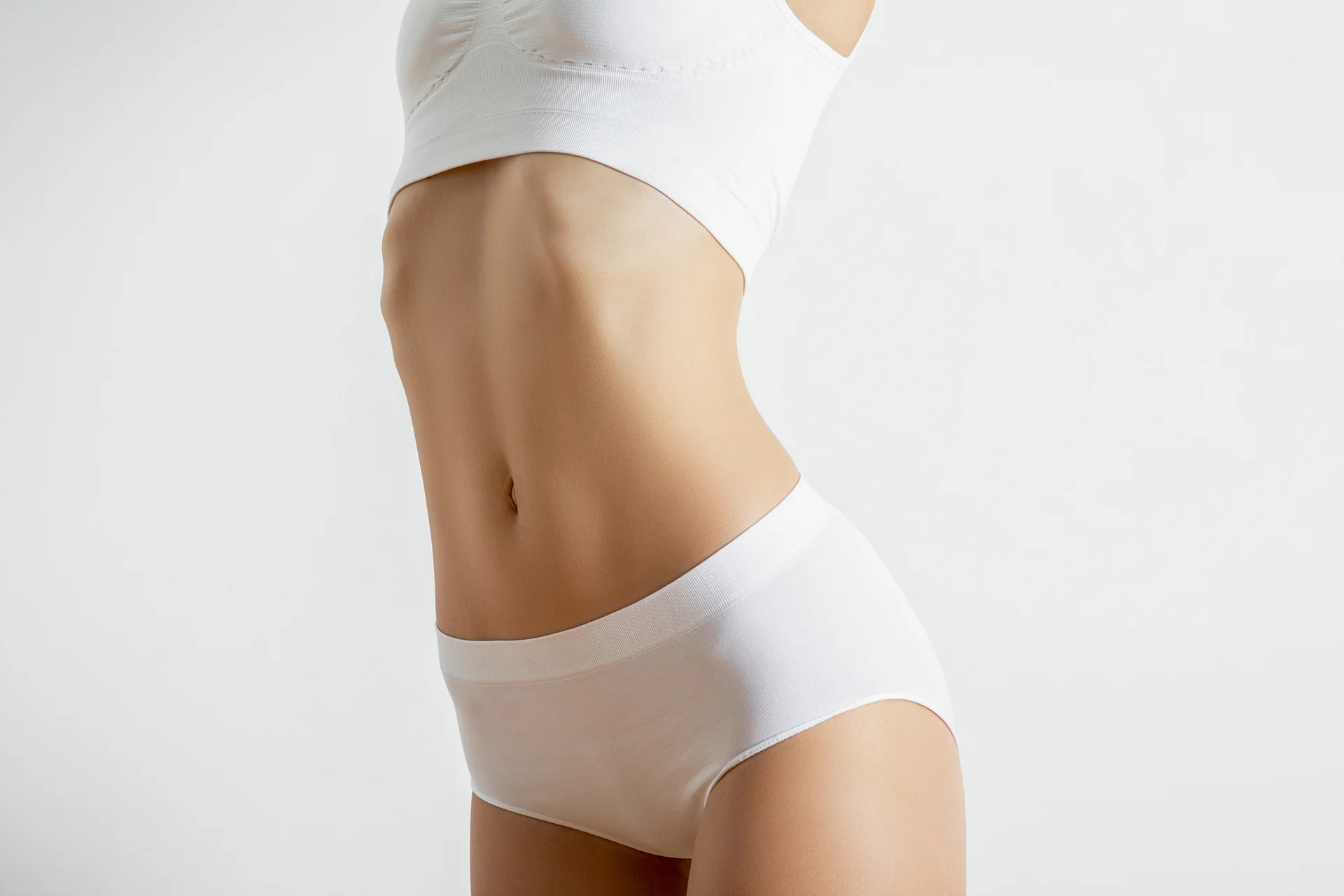Morpheus8 and Ultherapy are two popular non-invasive skin tightening treatments used to address wrinkles, fine lines, loose skin, and sagging.
While they both achieve skin rejuvenation through collagen stimulation, Morpheus8 and Ultherapy work in different ways using different technologies.
Choosing between these innovative procedures depends on understanding how they differ in their treatment approach, effectiveness, cost, and areas of the body they can improve.
Morpheus8 vs Ultherapy: How Do They Work?
Morpheus8 combines microneedling with radiofrequency energy to stimulate collagen production in the deeper dermal layers. Microneedling creates micro-injuries in the skin, and the heat from radiofrequency energy then triggers collagen and elastin production to promote tightening effects.
Ultherapy utilizes targeted ultrasound energy that is directed to the innermost layers of skin. The ultrasound waves induce lifting and muscle contractions, which work to lift and tighten lax connective tissue.
Areas of Treatment
Ultherapy is approved only for non-invasive face and neck lifts, though it can also be used “off-label” to tighten décolleté skin.
For significant laxity and sagging, especially below the face, Morpheus8 may be better suited to achieve substantial tightening and firming through deeper tissue stimulation.
Effectiveness and Results
While both Morpheus8 and Ultherapy are highly effective at skin tightening and rejuvenation, studies show Morpheus8 delivers faster, longer-lasting results. Morpheus8 aims for tighter, more wrinkle-free skin in as little as 30 days.
Results continue improving over 6 months and last 3-5 years with annual touch-up treatments. Ultherapy results take 3-6 months to emerge and fade after about 12-15 months, requiring maintenance treatments every 9-12 months to sustain.
Differences Between Morpheus8 and Ultherapy
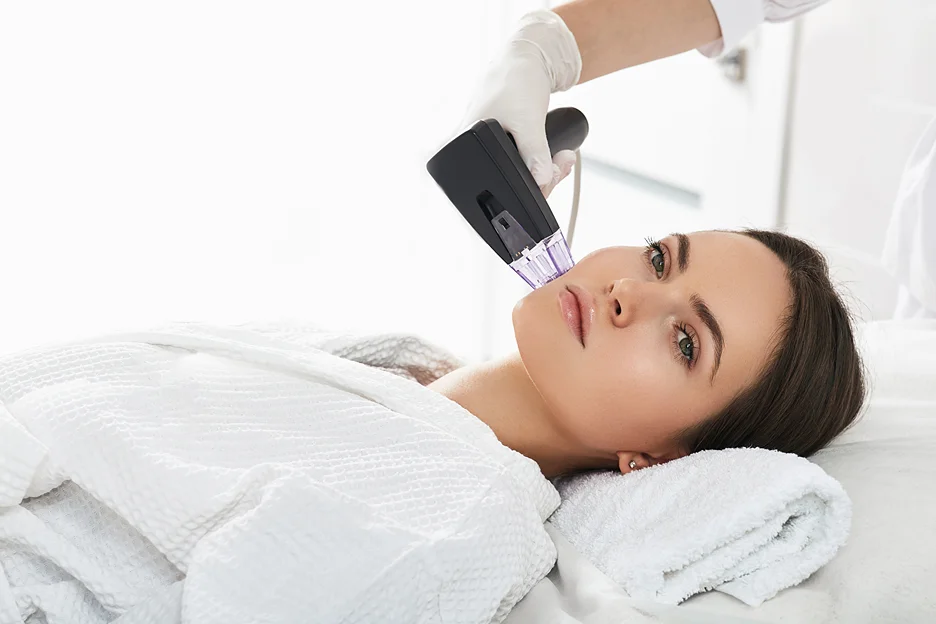
While Morpheus8 and Ultherapy are both innovative, non-invasive skin tightening procedures, there are several key differences to consider when choosing a treatment.
Factors like downtime, cost, areas treated and skin types suitable for each can help determine which option may be better for your unique needs and goals.
Downtime and Recovery
Morpheus8 requires 1-3 days of downtime due to minor pinpoint bleeding from microneedling. Patients may experience redness, sensitivity and swelling which subside quickly.
Ultherapy has little to no downtime, though some report mild tenderness for a few hours post-treatment. Patients resume normal activities immediately but should avoid alcohol or strenuous exercise for 24-48 hours.
Cost
Morpheus8 is often slightly less expensive than Ultherapy. While individual treatment costs vary based on areas addressed and provider experience, Morpheus8 typically ranges from $500 to $2,500 per area.
Ultherapy costs between $500 to $4,500 per area, especially for full face and neck treatment. Multiple sessions may be needed for both, increasing the overall cost.
Skin Types and Areas Treated
Morpheus8 can safely treat all skin types from light to dark, and all areas of the face and body. Ultherapy works best on lighter skin tones due to how ultrasound waves target various depths.
It is only approved for the face and neck though limited “off-label” body treatments are performed. Morpheus8’s microneedles and precise RF energy can reach deeper tissue layers regardless of skin color or severity of concerns.
While Ultherapy and Morpheus8 differ in their treatment approach, downtime, cost and versatility, both are exceptional non-invasive options for tighter, firmer skin. The best choice will depend on your budget, tolerance for recovery time, and specific areas of concern.
A consultation with a board-certified dermatologist or plastic surgeon can help determine which treatment option will maximize your desired outcomes.
Morpheus8 vs Ultherapy: Which is Better for Skin Tightening?
Morpheus8 and Ultherapy are two popular non-invasive skin tightening treatments used to address wrinkles, fine lines, loose skin, and sagging. While they both achieve skin rejuvenation through collagen stimulation, Morpheus8 and Ultherapy work in different ways using different technologies.
Choosing between these innovative procedures depends on understanding how they differ in their treatment approach, effectiveness, cost, and areas of the body they can improve.
Morpheus8 combines microneedling with radiofrequency energy to stimulate collagen production in the deeper dermal layers. Microneedling creates micro-injuries in the skin, and the heat from radiofrequency energy then triggers collagen and elastin production to promote tightening effects.
Ultherapy utilizes targeted ultrasound energy that is directed to the innermost layers of skin. The ultrasound waves induce lifting and muscle contractions, which work to lift and tighten lax connective tissue.
Morpheus8 can be used to rejuvenate skin on the face, neck, and body, including the arms, abdomen, thighs and buttocks. Ultherapy is approved only for non-invasive face and neck lifts, though it can also be used “off-label” to tighten décolleté skin.
For significant laxity and sagging, especially below the face, Morpheus8 may be better suited to achieve substantial tightening and firming through deeper tissue stimulation.
While both Morpheus8 and Ultherapy are highly effective at skin tightening and rejuvenation, studies show Morpheus8 delivers faster, longer-lasting results. Morpheus8 aims for tighter, more wrinkle-free skin in as little as 30 days.
Results continue improving over 6 months and last 3-5 years with annual touch-up treatments. Ultherapy results take 3-6 months to emerge and fade after about 12-15 months, requiring maintenance treatments every 9-12 months to sustain.
Morpheus8 and Ultherapy offer innovative approaches to tighter, more toned skin but differ significantly in results, cost, downtime and treatment areas. Determine your priorities and discuss options with a specialist to achieve your best outcome through these advanced rejuvenating technologies.
Can Morpheus8 and Ultherapy Be Combined?
For some patients, combining Morpheus8 and Ultherapy may provide optimal results. These innovative treatments work synergistically by tightening and rejuvenating skin in different ways. Used together under the care of an experienced provider, a combination approach can dramatically enhance your outcome.
Potentially Enhanced Results When Used Together
Morpheus8 stimulates new collagen production deeper within the dermis for skin tightening and wrinkle reduction. Ultherapy uses focused ultrasound energy to lift and tone muscles as well as tighten skin.
By using these technologies together, it’s possible for an “inside-out/outside-in” rejuvenation can be achieved enhancing skin firmness, texture and overall appearance.
Treatment Longevity Up to 5 Years
Studies show combining Morpheus8 and Ultherapy extends the longevity of results versus individual treatments alone.
Morpheus8 results typically last 3-5 years with a single maintenance session each year. When combined with Ultherapy, the effects may last 4-5 years or longer, delaying the need for follow-up visits.
Patients continue experiencing progressive lifting, tightening and rejuvenation over the course of months as new collagen develops.
Addresses Different Skin Concerns
Morpheus8 and Ultherapy excel at treating specific skin concerns. Morpheus8 reduces wrinkles, tightens skin and improves tone.
Ultherapy lifts and firms sagging skin of the face and neck. Using these treatments together creates a comprehensive approach to refresh your appearance by targeting signs of aging on multiple levels for a more dramatic, longer-lasting transformation overall.
A synergistic combination of Morpheus8 and Ultherapy should only be performed under the guidance of a board-certified dermatologist or plastic surgeon.
They can properly assess your needs, develop an effective treatment plan, and set realistic expectations for optimal results with the least number of sessions required.
While more intensive, combining technologies often eliminates the need for continued follow-up maintenance treatments to sustain improvements long-term.
What to Expect: Treatment Duration
Treatment duration for both Morpheus8 and Ultherapy depends on the areas being addressed as well as skin health and condition.
Typically, sessions range from 30 minutes to 2 hours based on the extent and complexity of your concerns. While quick to perform, multiple treatments 4-6 weeks apart are often required to achieve significant, longer-lasting improvements.
Morpheus8: 30 Minutes to 1 Hour Per Session
A Morpheus8 session averages 30-60 minutes for a full face treatment or specific area like the brow or neck. More time will be needed to treat larger zones or when combining face and body areas in a single visit.
The microneedling and radiofrequency treatment is tolerable for most using a topical anesthetic to maximize comfort. 3 bi-weekly or monthly sessions are usually recommended for optimal collagen renewal and tightening.
Ultherapy: 1 to 1.5 Hours Per Session
Ultherapy treatment time ranges from 60 to 90 minutes depending on the number of “passes” required to properly treat your concerns.
Single or split sessions focused on various face and neck zones are performed using ultrasound gel and advanced transducer technology. Initial treatment may require 90 minutes to achieve tightening of brow, eyes, face, jawline and neck with fastest response in areas with greatest laxity.
Follow-up sessions at 3 and 6 months optimize and prolong toning effects.
Multiple Sessions May Be Required
While quick to perform, both Morpheus8 and Ultherapy typically require several treatment sessions to achieve your desired outcome.
Collagen renewal and regeneration is a process that occurs over weeks and months. Follow-up visits 4 to 6 weeks apart allow for necessary “booster” treatments to maximize improvements.
The specific number of sessions will depend on your concerns, age, skin health and other factors. Your doctor can properly assess your needs and set realistic expectations for optimal rejuvenation.
Choosing Between Morpheus8 and Ultherapy
Whether Morpheus8 or Ultherapy is right for you depends on several factors. Discussing options with a board-certified dermatologist or plastic surgeon can help determine which treatment will best address your needs and achieve your desired outcome.
Considerations include cost, recovery time, areas of concern and projected length of results.
Consider Your Needs and Skin Concerns
The areas you want to improve and severity of skin sagging or wrinkles will influence whether Morpheus8 or Ultherapy is most suitable. Morpheus8 can treat minor to moderate face and body concerns.
Ultherapy focuses on mild to moderate face and neck sagging. For significant laxity or desire to treat “off-label” areas like abdomen or thighs, Morpheus8 may be preferable. Discuss your concerns and goals to choose the right option.
Discuss Options with a Qualified Provider
Only board-certified dermatologists and plastic surgeons with extensive experience in Morpheus8, Ultherapy and combination techniques can properly evaluate your needs and deliver optimum results.
They stay up-to-date with evolving technologies, best practices and specialized treatment regimens to exceed patient expectations. Schedule consultations with top providers in your area to discuss pros, cons and expected outcomes before proceeding.
Morpheus8 for Body Treatments and Longer-Lasting Results
If you want to tighten skin on the body in addition to the face, or desire effects lasting 3-5 years, Morpheus8 may be your best choice.
It safely and effectively rejuvenates skin on the face, neck, abdomen, arms, thighs and other areas. And with annual touch-up treatments, results can last up to 5 years due to collagen renewal within deeper tissue layers.
Ultherapy for Face and Neck Skin Tightening
For non-invasive tightening and lifting specifically of face and neck skin, Ultherapy remains an excellent option, especially for those with limited downtime.
While results fade within 12-15 months, the treatment can be repeated to sustain improvements long-term with good response rates for most patients. Mild side effects and fast recovery preserve your normal routine and activities.
In summary, Morpheus8 and Ultherapy offer innovative approaches to tighter, more toned skin but differ significantly in results, cost, downtime and treatment areas. Determine your priorities and discuss options with a specialist to achieve your best outcome through these advanced rejuvenating technologies.
Experience Dramatic Results with Morpheus8 at Good Vibe Medical
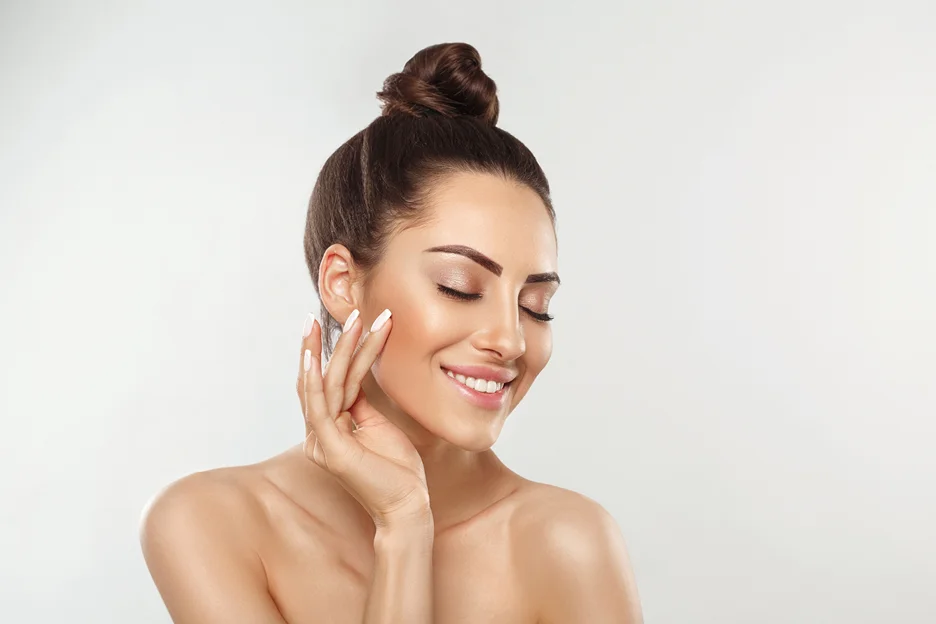
If you’re looking for a non-invasive treatment to tighten sagging skin and reduce wrinkles on both the face and body, Morpheus8 at Good Vibe Medical can help you achieve transformative results.
Whether you have mild sagging and crepey skin starting to show signs of aging, or significant concerns from weight loss or hereditary factors, Morpheus8 at Good Vibe Medical can deliver the improvements you want. Imagine tighter, brighter skin on your face, neck, abdomen, arms or other areas – all without the downtime or risks associated with cosmetic surgery.
For a complimentary Morpheus8 consultation, call (973) 620-2069 or submit an online inquiry to schedule your appointment at Good Vibe Medical. Discover why Morpheus8, in the hands of true specialists, is considered the gold standard for non-invasive skin rejuvenation and tightening.
You deserve to feel as vibrant and youthful as you look!
